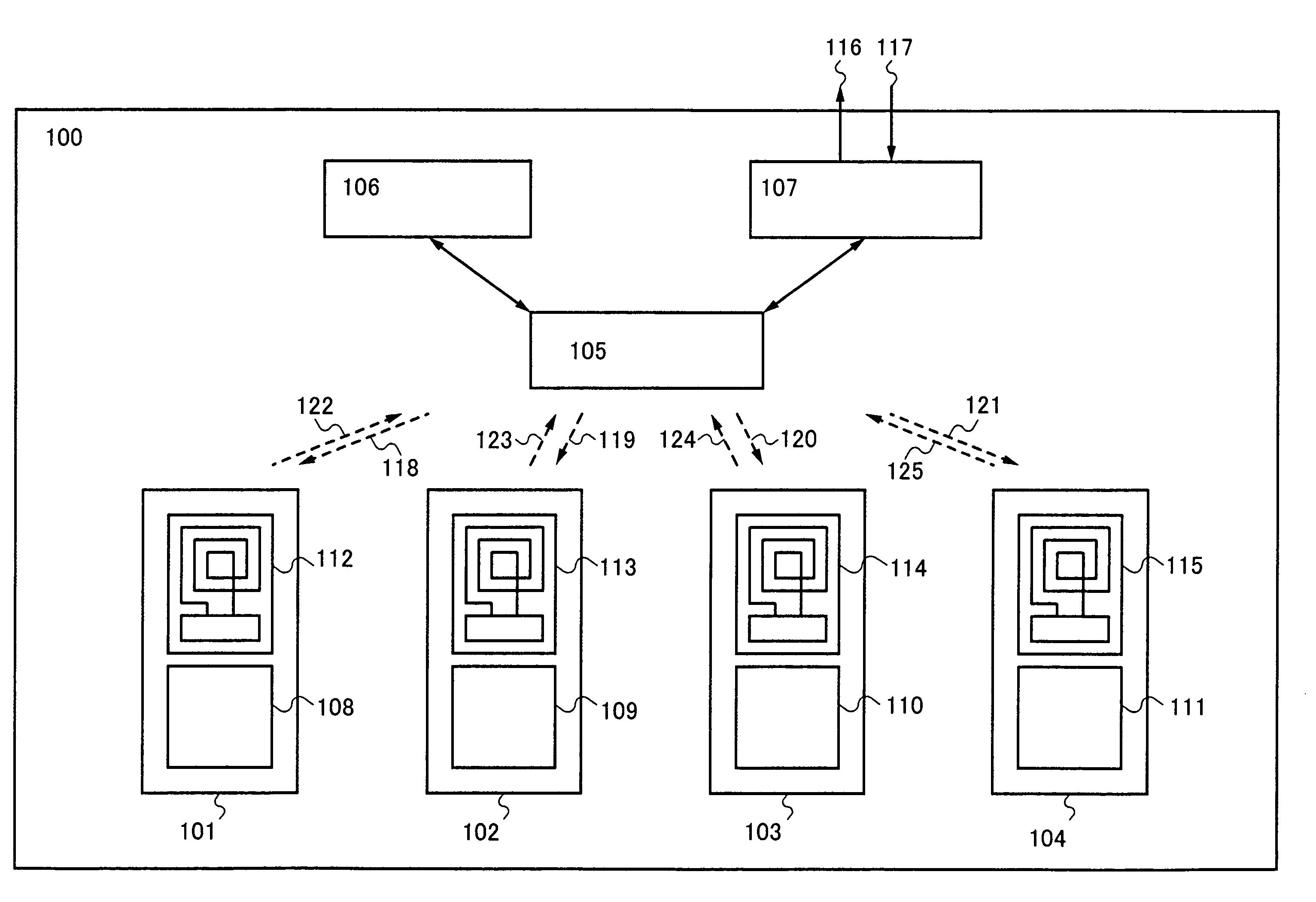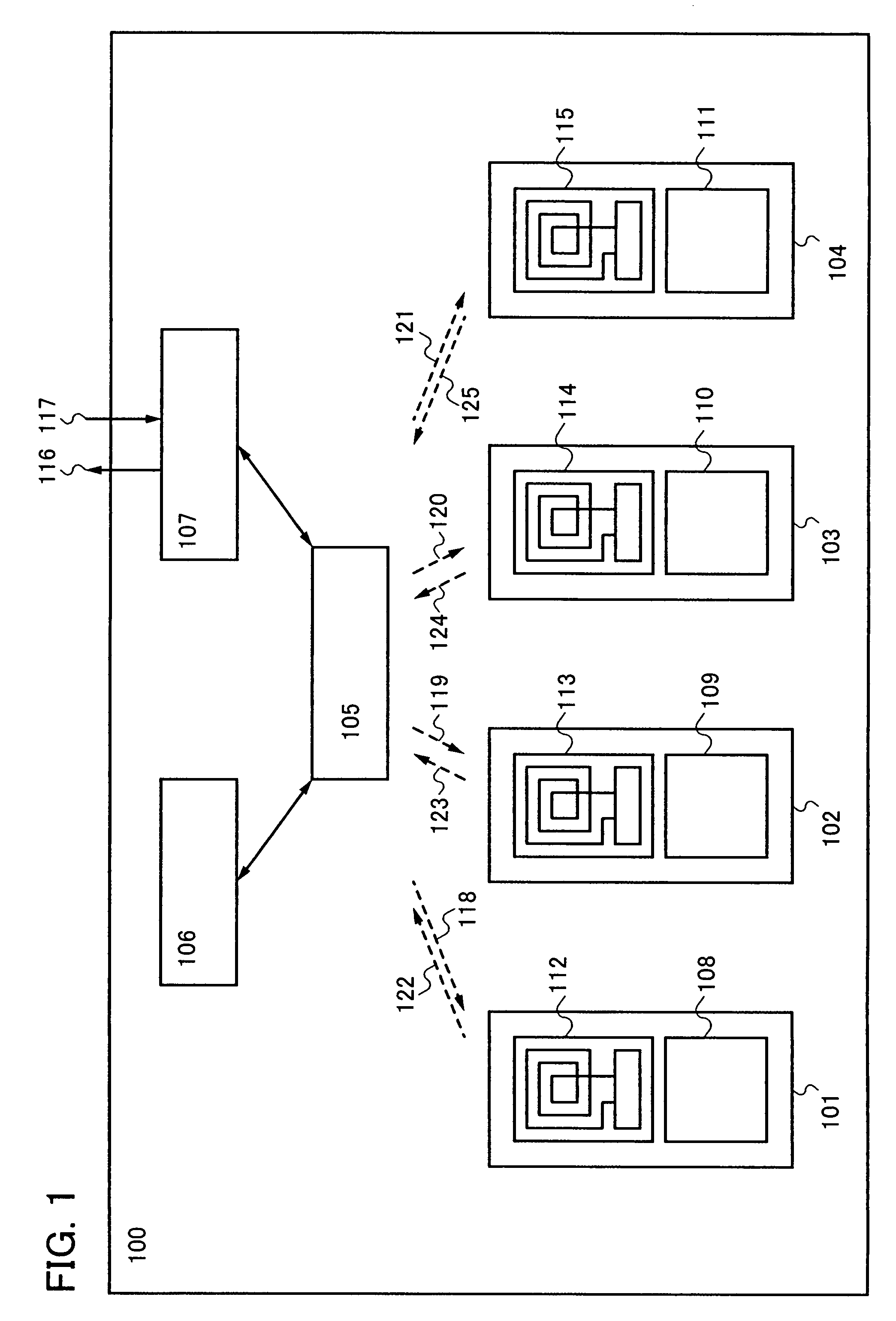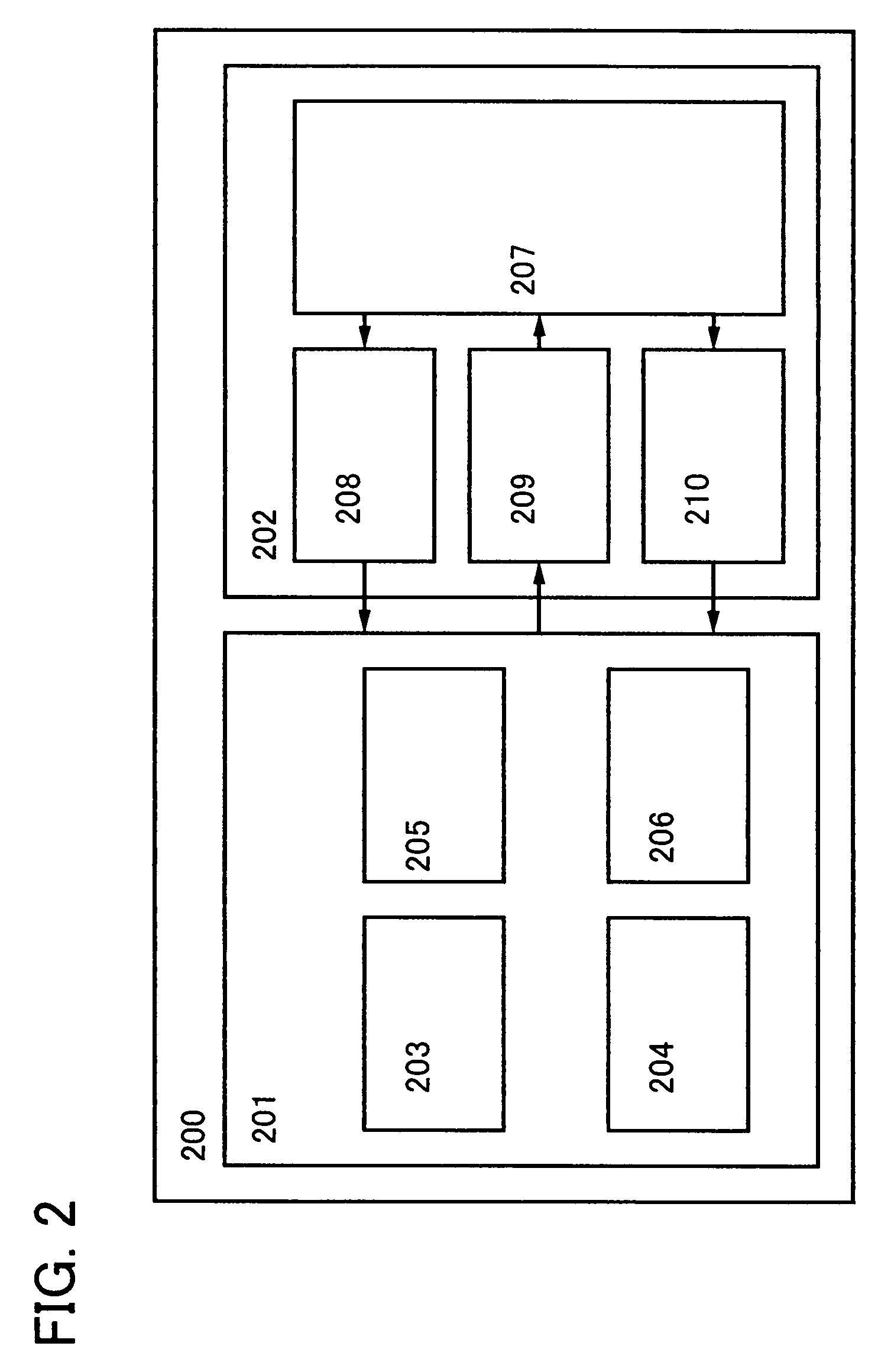Semiconductor device
a technology of semiconductors and devices, applied in the direction of liquid/fluent solid measurement, multi-programming arrangement, instruments, etc., can solve the problems of increasing the power consumption of data buses, and achieve the effects of low cost, less power consumption, and high arithmetic performan
- Summary
- Abstract
- Description
- Claims
- Application Information
AI Technical Summary
Benefits of technology
Problems solved by technology
Method used
Image
Examples
embodiment mode 1
[0034]Embodiment Mode 1 describes an example of a structure of a semiconductor device of the present invention with reference to FIGS. 1 to 3. FIGS. 1 to 3 are block diagrams of a semiconductor device, a CPU, and a router circuit of this embodiment mode, respectively.
[0035]In FIG. 1, a semiconductor device 100 has first to fourth CPUs 101 to 104, a router circuit 105, a thread control circuit 106, and an external device controller 107. The first to fourth CPUs 101 to 104 have first to fourth CPU cores 108 to 111 and first to fourth wireless circuits 112 to 115, respectively. Note that in FIG. 1, the router circuit 105 transmits first to fourth wireless transmission signals 118 to 121 to the first to fourth CPUs 101 to 104, and the first to fourth CPUs 101 to 104 transmit fifth to eighth wireless transmission signals 122 to 125 to the router circuit 105, respectively. The semiconductor device 100 transmits and receives a data signal or a control signal to and from an external device ...
embodiment mode 2
[0053]Embodiment Mode 2 describes the structure of the wireless circuit of the CPU in the above embodiment mode with reference to FIG. 4. FIG. 4 shows a case where the wireless circuit has the antenna circuit 207, the demodulation circuit 208, the modulation circuit 209, and the power supply circuit 210.
[0054]In FIG. 4, the modulation circuit 209 has a transistor 406 and can superimpose transmission data on a communication signal by changing the potential of a modulation signal line 402.
[0055]The demodulation circuit 208 has a first coupling capacitor 407, a first diode 408, a second diode 409, an LPF resistor 410, and an LPF capacitor 411. A first AC voltage obtained from a communication signal by the antenna circuit 207 is supplied through a wiring 401 and converted into a second AC voltage by the first coupling capacitor 407, and the second AC voltage is supplied to a wiring 412. The second AC voltage is converted into a DC voltage by a rectifier circuit which has the first diode...
embodiment mode 3
[0059]Embodiment Mode 3 describes a structure of a wireless circuit of a CPU, which is different from that of Embodiment Mode 2, with reference to FIG. 5.
[0060]In FIG. 5, the antenna circuit 207 has a first antenna 534 and a second antenna 535. The first antenna 534 is used for data transmission and reception with a first communication signal and for generation of a first power supply voltage from the first communication signal. The second antenna 535 is used for generation of a second power supply voltage from a second communication signal.
[0061]The modulation circuit 209 has a transistor 506 and can superimpose transmission data on the first communication signal by changing the potential of a modulation signal line 502.
[0062]The demodulation circuit 208 has a first coupling capacitor 507, a first diode 508, a second diode 509, an LPF resistor 510, and an LPF capacitor 511. A first AC voltage obtained from the first communication signal by the first antenna 534 is supplied through ...
PUM
 Login to View More
Login to View More Abstract
Description
Claims
Application Information
 Login to View More
Login to View More - R&D
- Intellectual Property
- Life Sciences
- Materials
- Tech Scout
- Unparalleled Data Quality
- Higher Quality Content
- 60% Fewer Hallucinations
Browse by: Latest US Patents, China's latest patents, Technical Efficacy Thesaurus, Application Domain, Technology Topic, Popular Technical Reports.
© 2025 PatSnap. All rights reserved.Legal|Privacy policy|Modern Slavery Act Transparency Statement|Sitemap|About US| Contact US: help@patsnap.com



